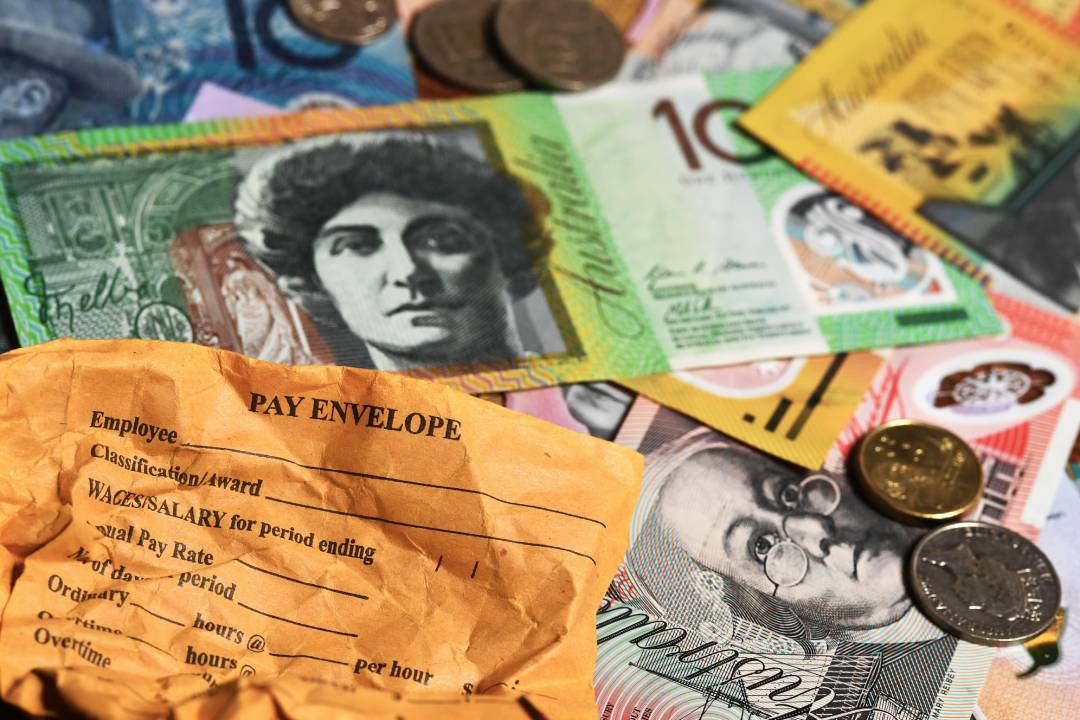

Bad news for wage earners, with the inflation rate coming in more than the wage rise rate, which means our real wages (i.e. what they can buy) is falling. The good news from this bad pay-packet news is that it will delay the Reserve Bank’s first official interest rate rise.
Of course, savers won’t cheer that news, but mortgage holders will. And this could mean that this group will keep on spending strongly until rates start to rise. However, those renting and needing higher wages to keep spending to current levels, need wages to rise faster than inflation to push up real spending.
The Australian Bureau of Statistics (ABS) told us that wages rose 0.7% in the December quarter, taking the annual growth up to 2.3%. While this was the strongest rise since mid-2019, it was less than the inflation rate of 3.5%, which is set to go higher if you can believe the boss of Woolies, Brad Banducci.
Banducci told The AFR that “the Ukraine-Russia situation would not be the only contributing factor to price increases, noting that inputs for construction had increased – in some cases by 50 per cent to 70 per cent,” Carrie LaFrenz reported.
Products on the shelves of Woolworths saw price rises up 2-3% in December alone! “There are lots of cost pressure across our supply chain,” he said. “Actually, one of our biggest cost pressures right now is in construction of new stores or our new DCs [distribution centres],” he said.
This tells me that inflation is set to keep rising until there are fewer impacts from the pandemic and normalcy returns to our lives and the economy, but that will take time. Normalcy will see us progressively stop spending on ‘stuff’, and lay out more of our money on services.
Since the pandemic, Australians could buy fewer holiday services so they spent money on gadgets, furniture, renovations and so on.
Demand for products with supply problems is inflationary but that will eventually lead to big supplies of inventories as we buy more and more services, which should bring inflation down over time.
But now, real wages are falling as inflation is rising more quickly.
The SMH put this into perspective: “Since the 2019 election, inflation has outpaced wage growth by 0.8 per cent – the first time this century that real wages have fallen during a parliamentary term.”
The ACTU told The SMH that “over the past 12 months, the gap between inflation and wages growth meant a person on an income of $68,000 had suffered an $832 pay cut.”
Pay rises were strongest in the accommodation and food services sector, up by 3.5% for the year, while construction wages were up 2.4%. The rise in the services sector would be due to the lack of overseas workers, so labour supply in this area is low, pushing up wages.
The only plus out of this wage news is for those who have borrowed on a variable home loan. With wage and inflation numbers like these, the RBA will be unwilling to raise the official cash rate of interest, which is the prime mover for home loan rates.
In the 1800s, Scottish historian Thomas Carlyle described economics as a dismal science after reading T. R. Malthus' gloomy prediction that population would always grow faster than food, dooming mankind to unending poverty and hardship! And finding good news in bad news is what you can expect of economists and economies, so we’re not 100 per cent dismal!